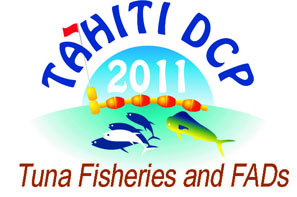Survival rate of silky sharks (Carcharhinus falciformis) caught incidentally onboard French tropical purse seiners
1 :
2 : IRD
(IRD)
IRD BP 570, Victoria, Mahé, Seychelles -
Seychelles
3 : Department of Ichthyology and Fisheries Science, Rhodes University
(DIFS)
Department of Ichthyology and Fisheries Science, Rhodes University, Grahamstown 6140 -
Afrique du Sud
4 : Institut de Recherche pour le Développement
(IRD)
UMR 212, P.o. Box 570, Victoria -
Seychelles
5 : South African Institute for Aquatic Biodiversity
(SAIAB)
* : Corresponding author
Private Bag 1015, Grahamstown, 6140 -
Afrique du Sud
Currently, French purse seiners in the Indian Ocean release all sharks that are caught in order to reduce the fishery induced mortality of elasmobranchs. Through participation in two commercial fishing trips, we first recorded the number of sharks (primarily silky sharks, Carcharhinus falciformis) along with their condition once they had been sorted by the crew on the upper and lower decks. Estimations of the direct mortality rates differed between the two cruises and appeared to be directly linked to set size (tonnage), 68% from the first cruise (large sets) and 28% in the second cruise (smaller sets). Direct mortality rates also appeared to be linked with the location of the individual, as more sharks were found dead on the lower deck than the upper. In total, 20 silky sharks were tagged with MiniPATs (Wildlife Computers, Redmond, WA, USA ) to study their survival after release. The silky sharks tagged in this study averaged 125.3 ± 33.8 cm (mean ± SD) curved total length. Six tags clearly showed immediate mortality, while data from three tags suggested delayed mortality after 2.5, 14 and 15 days. Nine tags showed that the sharks survived. Three tags failed to report data. Following these findings a 'best practices' manual for fishers was prepared to increase rates of survival of sharks caught by purse seine vessels. However, other methods prior to the sharks being brought onboard must also be investigated.

 PDF version
PDF version
